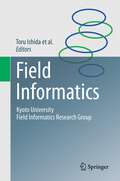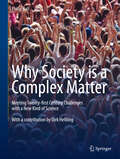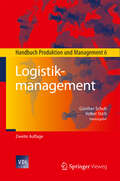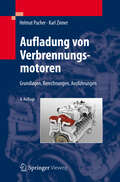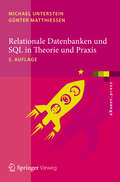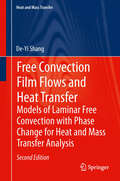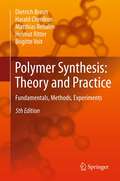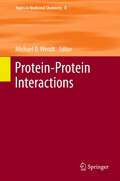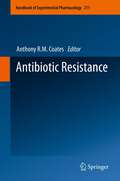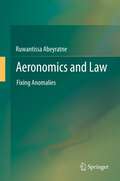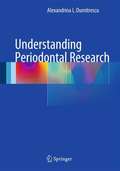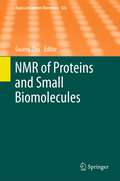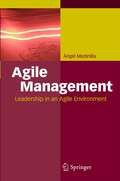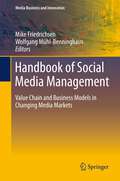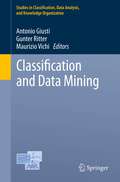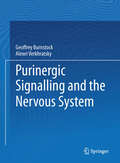- Table View
- List View
Field Informatics
by Toru IshidaHere we use the term "field" to refer to a sphere of practical operation, and correspondingly the term "field informatics" describes informatics tools and methodologies that arise in the field. The components of field informatics are description, prediction, design and transfer, and the methods for those components vary widely. For example, we consider the social goal of revitalizing a mountainous area experiencing depopulation and we show how the tools and methodologies of field informatics may be used to describe such situations using remote sensing, biologging, human sensing and ethnography; the effects of various solutions can be predicted using system dynamics and multiagent simulations; the solutions can be designed using inclusive design or participatory design methods; and finally the experience gained can be transferred using case writing and outreach communication. The authors are specialists in diverse areas such as informatics, engineering, agriculture, sociology and pedagogy, and their areas of interest range from environment conservation to social education for international cooperation. They have a particular focus on the environment in southeast Asia and related topics such as large-scale traffic simulations, participatory workshops, inclusive design workshops, distance learning, and intercultural collaboration. This book targets graduate students seeking tools and methodologies for natural observation, field workers engaged in social participation, and researchers and engineers pursuing innovation. The techniques described in the book could also be exploited by government officials to form consensus and develop activities or by non-profit organizations to undertake more effective social programs.
Preventive Biomechanics
by Christophe Then Gerhard SilberHow can we optimize a bedridden patient's mattress? How can we make a passenger seat on a long distance flight or ride more comfortable? What qualities should a runner's shoes have? To objectively address such questions using engineering and scientific methods, adequate virtual human body models for use in computer simulation of loading scenarios are required. The authors have developed a novel method incorporating subject studies, magnetic resonance imaging, 3D-CAD-reconstruction, continuum mechanics, material theory and the finite element method. The focus is laid upon the mechanical in vivo-characterization of human soft tissue, which is indispensable for simulating its mechanical interaction with, for example, medical bedding or automotive and airplane seating systems. Using the examples of arbitrary body support systems, the presented approach provides visual insight into simulated internal mechanical body tissue stress and strain, with the goal of biomechanical optimization of body support systems. This book is intended for engineers, manufacturers and physicians and also provides students with guidance in solving problems related to support system optimization.
Why Society is a Complex Matter
by Philip BallSociety is complicated. But this book argues that this does not place it beyond the reach of a science that can help to explain and perhaps even to predict social behaviour. As a system made up of many interacting agents - people, groups, institutions and governments, as well as physical and technological structures such as roads and computer networks - society can be regarded as a complex system. In recent years, scientists have made great progress in understanding how such complex systems operate, ranging from animal populations to earthquakes and weather. These systems show behaviours that cannot be predicted or intuited by focusing on the individual components, but which emerge spontaneously as a consequence of their interactions: they are said to be 'self-organized'. Attempts to direct or manage such emergent properties generally reveal that 'top-down' approaches, which try to dictate a particular outcome, are ineffectual, and that what is needed instead is a 'bottom-up' approach that aims to guide self-organization towards desirable states. This book shows how some of these ideas from the science of complexity can be applied to the study and management of social phenomena, including traffic flow, economic markets, opinion formation and the growth and structure of cities. Building on these successes, the book argues that the complex-systems view of the social sciences has now matured sufficiently for it to be possible, desirable and perhaps essential to attempt a grander objective: to integrate these efforts into a unified scheme for studying, understanding and ultimately predicting what happens in the world we have made. Such a scheme would require the mobilization and collaboration of many different research communities, and would allow society and its interactions with the physical environment to be explored through realistic models and large-scale data collection and analysis. It should enable us to find new and effective solutions to major global problems such as conflict, disease, financial instability, environmental despoliation and poverty, while avoiding unintended policy consequences. It could give us the foresight to anticipate and ameliorate crises, and to begin tackling some of the most intractable problems of the twenty-first century.
Evidence-Based Forensic Dentistry
by Jasdeep Kaur Balwant RaiRecent years have witnessed significant advances in forensic odontology. This book presents basic concepts in the field and describes all the standard examination procedures currently employed in the acquisition of dental evidence. Detailed information is provided on the identification of unknown individuals, the application of forensic dentistry in mass disasters and multiple fatality incidents, the role of dental evidence in child abuse investigations, and the analysis of bite mark evidence. Other features of the book are a series of high-profile cases, clear advice on the writing of legal reports, and discussion of the significance of DNA and oral fluid in forensic odontology. The text is supplemented by numerous high-quality figures, many of them in color. This book will be invaluable for dental examiners and pathologists, legal and police science professionals, and dentists who want to use their training and experience in an interesting and challenging way.
Logistikmanagement
by Günther Schuh Volker StichDer 6. Band des Handbuchs gibt einen umfassenden Überblick zu aktuellsten Methoden und Vorgehensweisen zum Logistikmanagement. Die Themen Konfiguration logistischer Netzwerke, Beschaffungs-, Distributions- und Ersatzteillogistik, Konzepte Supply Chain Management und Informationssysteme werden vorgestellt. Ausgewählte Fallbeispiele und 119 Darstellungen verdeutlichen die vermittelten Grundlagen. Ein Buch für Fach- und Führungskräfte technologieorientierter Unternehmen ebenso wie für BWL- und Ingenieurswissenschaftler und Studenten.
Aufladung von Verbrennungsmotoren: Grundlagen, Berechnungen, Ausführungen
by Helmut Pucher Karl ZinnerDas Buch vermittelt Grundlagenwissen über die verschiedenen Aufladungsprozesse und ihr Systemverhalten in Zusammenwirkung mit dem Verbrennungsmotor. Die praktische Umsetzung wird anhand aktueller Anwendungen und ihrer dynamischen Eigenschaften erläutert. Damit wendet sich das Buch sowohl an Ingenieure, die in der Motorenentwicklung oder bei Komponentenzulieferern tätig sind, als auch an Studierende mit Grundkenntnissen auf dem Gebiet der Verbrennungsmotoren.
Relationale Datenbanken und SQL in Theorie und Praxis
by Günter Matthiessen Michael UntersteinNeben den grundlegenden Konzepten der relationalen Datenbanktechnologie werden in dem Band auch die Entwicklung und Anwendung praxistauglicher Informationssysteme mit der standardisierten Sprache SQL beschrieben. Methoden zum Ablegen und Wiederfinden von Daten sind dabei ebenso Thema wie logische Zusammenhänge, die berücksichtig werden müssen, damit Daten aussagefähig bleiben. Eine Fallstudie sowie zahlreiche Übungsaufgaben helfen Lesern dabei, Konzepte eigenständig zu erarbeiten und sie bei der Gestaltung einer Datenbank anzuwenden.
Free Convection Film Flows and Heat Transfer
by De-Yi ShangThis book presents recent developments in our systematic studies of hydrodynamics and heat and mass transfer in laminar free convection, accelerating film boiling and condensation of Newtonian fluids, as well as accelerating film flow of non-Newtonian power-law fluids (FFNF). These new developments provided in this book are (i) novel system of analysis models based on the developed New Similarity Analysis Method; (ii) a system of advanced methods for treatment of gas temperature- dependent physical properties, and liquid temperature- dependent physical properties; (iii) the organically combined models of the governing mathematical models with those on treatment model of variable physical properties; (iv) rigorous approach of overcoming a challenge on accurate solution of three-point boundary value problem related to two-phase film boiling and condensation; and (v) A pseudo-similarity method of dealing with thermal boundary layer of FFNF for greatly simplifies the heat-transfer analysis and numerical calculation. A system of practical application equations on heat and mass transfer are provided in each chapter, which are formulated based on the rigorous numerical solutions with consideration of variable physical properties. In addition, in the second edition, other new research developments are further included on resolving an even big challenge associated with investigations of laminar free film condensation of vapour-gas mixture. They involve the novel methods for treatment of concentration- and temperature- dependent physical properties of vapour-gas mixture, and for rigorous solution of interfacial vapour saturation temperature, which have lead to rigorous analysis and calculation results on two-phase film flow velocity, temperature, and concentration fields, as well as condensate heat and mass transfer.
Polymer Synthesis: Fundamentals, Methods, Experiments
by Brigitte Voit Matthias Rehahn Helmut Ritter Harald Cherdron Dietrich BraunEmphasis is on a broad description of the general methods and processes for the synthesis, modification and characterization of macromolecules. These more fundamental chapters will be supplemented by selected and detailed experiments. In addition to the preparative aspects the book also gives the reader an impression on the relation of chemical constitution and morphology of Polymers to their properties, as well as on their application areas. Thus, an additional textbook will not be needed in order to understand the experiments. The 5th edition contains numerous changes: In recent years, so-called functional polymers which have special electrical, electronic, optical and biological properties, have gained more and more in interest. This textbook was therefore supplemented by recipes which describe the synthesis of these materials in a new chapter "Functional polymers". Together with new experiments in chapter 3,4 and 5 the book now contains more than 120 recipes that describe a wide range of macromolecules. From the reviews of recent editions: "This is an excellent book for all polymer chemists engaged in synthesis research studies and education. It is educationally sound and has excellent laboratory synthetic examples. The fundamentals are well done for the teaching of students and references are resonably up-to-date. As in previous issues, there are sections dealing with an introduction; structure and nomenclature; methods and techniques for synthesis, characterization, processing and modification of polymers. ....The authors have noted the following changes from previous editions- a new section on correlations of structure, morphology and properties; revision and enlargement of other property and characterization procedures; additional new experiments such as controlled radical polymerization; enzymatic polymerizations; microelmulsions; and electrical conducting polymers. This is a high quality textbook at a reasonable price and should be considered as a suitable reference for all engaged in synthetic areas of polymer research." (Eli M. Pearce, Polytechnic University, Brooklyn, NY, USA)
Protein-Protein Interactions
by Michael D. WendtMichael D. Wendt Protein-Protein Interactions as Drug Targets Shaomeng Wang , Yujun Zhao , Denzil Bernard , Angelo Aguilar , Sanjeev Kumar Targeting the MDM2-p53 Protein-Protein Interaction for New Cancer Therapeutics Kurt Deshayes , Jeremy Murray , Domagoj Vucic The Development of Small-Molecule IAP Antagonists for the Treatment of Cancer John F. Kadow , David R. Langley , Nicholas A. Meanwell , Michael A. Walker , Kap-Sun Yeung , Richard Pracitto Protein-Protein Interaction Targets to Inhibit HIV-1 Infection Nicholas A. Meanwell , David R. Langley Inhibitors of Protein-Protein Interactions in Paramyxovirus Fusion - a Focus on Respiratory Syncytial Virus Andrew B. Mahon , Stephen E. Miller , Stephen T. Joy , Paramjit S. Arora Rational Design Strategies for Developing Synthetic Inhibitors of Helical Protein Interfaces Michael D. Wendt The Discovery of Navitoclax, a Bcl-2 Family Inhibitor
Recent Advances in Interval Type-2 Fuzzy Systems
by Oscar Castillo Patricia MelinThis book reviews current state of the art methods for building intelligent systems using type-2 fuzzy logic and bio-inspired optimization techniques. Combining type-2 fuzzy logic with optimization algorithms, powerful hybrid intelligent systems have been built using the advantages that each technique offers. This book is intended to be a reference for scientists and engineers interested in applying type-2 fuzzy logic for solving problems in pattern recognition, intelligent control, intelligent manufacturing, robotics and automation. This book can also be used as a reference for graduate courses like the following: soft computing, intelligent pattern recognition, computer vision, applied artificial intelligence, and similar ones. We consider that this book can also be used to get novel ideas for new lines of re-search, or to continue the lines of research proposed by the authors.
Zukunft und Wissenschaft
by Reinhold PoppWissenschaftlich fundierte Zukunftsforschung findet insbesondere im deutschsprachigen Raum nur vereinzelt statt. In Deutschland, Österreich und der Schweiz gibt es insgesamt nur drei Hochschulen mit Professuren für Zukunftsforschung - dem steht jedoch eine wachsende Zahl von Unternehmensberatern und Trend-Gurus gegenüber, die sich selbst als Zukunftsforscher bezeichnen. Die Autoren des Sammelbands beschäftigen sich in ihren Beiträgen systematisch mit den bislang vernachlässigten wissenschaftlichen Grundlagen der Zukunftsforschung.
Antibiotic Resistance (Handbook of Experimental Pharmacology #211)
by Anthony R.M. CoatesThis book describes antibiotic resistance amongst pathogenic bacteria. It starts with an overview of the erosion of the efficacy of antibiotics by resistance and the decrease in the rate of replacement of redundant compounds. The origins of antibiotic resistance are then described. It is proposed that there is a large bacterial resistome which is a collection of all resistance genes and their precursors in both pathogenic and non-pathogenic bacteria. Ongoing resistance surveillance programs are also discussed, together with the perspective of a clinical microbiologist. The book then turns to specific themes such as the most serious area of resistance in pathogens, namely in Gram-negative organisms. The role of combinations of antibiotics in combating resistance emergence is discussed, particularly in the tuberculosis field, and then the importance of non-multiplying and persistent bacteria which are phenotypically resistant to antibiotics and prolong the duration of therapy of antibiotics which leads to poor compliance and resistance emergence. The role of anti-microbial compounds in textiles is covered, with its potential to exacerbate the spread of resistance. Then, efflux pumps are discussed. The final chapter describes the compounds which are in late stage clinical development, illustrating the paucity of the antibiotic pipeline, especially for Gram-negative bacteria.
Multiphoton Processes and Attosecond Physics
by Kaoru Yamanouchi Midorikawa KatsumiRecent advances in ultrashort pulsed laser technology have opened new frontiers in atomic, molecular and optical sciences. The 12th International Conference on Multiphoton Processes (ICOMP12) and the 3rd International Conference on Attosecond Physics (ATTO3), held jointly in Sapporo, Japan, during July 3-8, showcased studies at the forefront of research on multiphoton processes and attosecond physics. This book summarizes presentations and discussions from these two conferences.
Aeronomics and Law: Fixing Anomalies
by Ruwantissa AbeyratneThis book embarks on a contemporary analysis of the interaction of economics and law relating to air transport, delving into the major issues that plague the industry. It shows how some of the thorny and frustrating issues could be approached sensibly. Among the issues discussed are the anomaly of exponential growth of air transport which makes airline profitability continue to be poor; the legislative impediments in most countries that preclude direct foreign investment in the industry; the confounding and muddled mess behind the economics of aircraft engine emissions; and the inexplicable reality that, although civil aviation is primarily meant to meet the needs of the people of the world, State regulators have upended the equation and given priority to national interests over the interests of the passenger. The book will be of interest to economists and lawyers alike who deal with air transport issues, and also to academics and students in the area of transportation as well as regulators and airlines.
Völkerstrafrechtspolitik
by Christoph Safferling Stefan KirschZehn Jahre nach dem Inkrafttreten des Völkerstrafgesetzbuches (VStGB) vereinigt der vorliegende Sammelband unterschiedliche Blickwinkel und Perspektiven auf das noch junge Gesetzeswerk und dessen Praxis. Die Bestandsaufnahme enthält - neben einem Blick auf die Rechtslage in Österreich und der Schweiz - Beiträge zur Entstehung des Gesetzes, seiner Anwendung in der Praxis und zu aktuellen Entwicklungen. Dabei wird eines klar: ohne einen interdisziplinären Ansatz, der neben rechtsdogmatischen Erwägungen auch politische und historische Argumente zulässt, können die mit der Ausbildung einer internationalen Strafrechtsordnung verbundenen Herausforderungen nicht gemeistert werden.
Understanding Periodontal Research
by Alexandrina L DumitrescuAs stated by The Cochrane Collaboration on their website, the practice of evidence-based medicine means integrating individual clinical expertise with the best available external clinical evidence from systematic research. Understanding Periodontal Research fills a significant gap in the literature by providing oral health and periodontal researchers with a comprehensive overview of the methodological aspects that are important when planning, conducting, and analyzing their research projects. It is designed to be easy to understand for beginners in the field, yet will also serve as a useful tool for those who are more experienced. Undergraduate and postgraduate dental students, dental hygienists, dental practitioners, and associated professionals who are interested in understanding the principles of periodontal research will all benefit from the clear information and guidance contained in this book.
NMR of Proteins and Small Biomolecules
by Guang ZhuApplication of NMR and Molecular Docking in Structure-Based Drug Discovery, by Jaime L. Stark and Robert Powers NMR as a Unique Tool in Assessment and Complex Determination of Weak Protein-Protein Interactions, by Olga Vinogradova and Jun Qin The Use of Residual Dipolar Coupling in Studying Proteins by NMR, by Kang Chen und Nico Tjandra NMR Studies of Metalloproteins, by Hongyan Li and Hongzhe Sun Recent Developments in 15N NMR Relaxation Studies that Probe Protein Backbone Dynamics, by Rieko Ishima Contemporary Methods in Structure Determination of Membrane Proteins by Solution NMR, by Tabussom Qureshi and Natalie K. Goto Protein Structure Determination by Solid-State NMR, by Xin Zhao Dynamic Nuclear Polarization: New Methodology and Applications, by Kong Hung Sze, Qinglin Wu, Ho Sum Tse and Guang Zhu
Agile Management: Leadership in an Agile Environment
by Ángel MedinillaIf you have tried to implement Agile in your organization, you have probably learned a lot about development practices, teamwork, processes and tools, but too little about how to manage such an organization. Yet managerial support is often the biggest impediment to successfully adopting Agile, and limiting your Agile efforts to those of the development teams while doing the same old-style management will dramatically limit the ability of your organization to reach the next Agile level. Ángel Medinilla will provide you with a comprehensive understanding of what Agile means to an organization and the manager's role in such an environment, i.e., how to manage, lead and motivate self-organizing teams and how to create an Agile corporate culture. Based on his background as a "veteran" Agile consultant for companies of all sizes, he delivers insights and experiences, points out possible pitfalls, presents practical approaches and possible scenarios, also including detailed suggestions for further reading. If you are a manager, team leader, evangelist, change agent (or whatever nice title) and if you want to push Agile further in your organization, then this is your book. You will read how to change the paradigm of what management is about: it is not about arbitrary decisions, constant supervision and progress control, and the negotiation of changing requirements. It is about motivation, self-organization, responsibility, and the exploitation of all project stakeholders' knowledge. We live in a different world than the one that most management experts of the 20th century describe, and companies that strive for success and excellence will need a new kind of manager - Agile managers.
Virtual und Augmented Reality (VR / AR)
by Ralf Dörner Wolfgang Broll Paul Grimm Bernhard JungDas Lehrbuch vermittelt die theoretischen und praktischen Grundlagen, die benötigt werden, um Virtual- und Augmented-Reality-Systeme (VR/AR) eigenständig zu realisieren oder zu erweitern. Es dient Studierenden als anschauliche Begleitlektüre zu Lehrveranstaltungen, die VR/AR thematisieren, u a. in den Fächern Informatik, Medien oder Natur- und Ingenieurwissenschaften. Durch seinen modularen Aufbau eignet sich der Band auch für das Selbststudium und kann darüber hinaus als Nachschlagewerk verwendet werden.
Virtual und Augmented Reality: Grundlagen und Methoden der Virtuellen und Augmentierten Realität (eXamen.press)
by Ralf Dörner, Wolfgang Broll, Paul Grimm and Bernhard JungDas Lehrbuch vermittelt die theoretischen und praktischen Grundlagen, die benötigt werden, um Virtual- und Augmented-Reality-Systeme (VR/AR) eigenständig zu realisieren oder zu erweitern. Es dient Studierenden als anschauliche Begleitlektüre zu Lehrveranstaltungen, die VR/AR thematisieren, u. a. in den Fächern Informatik, Medien oder Natur- und Ingenieurwissenschaften. Durch seinen modularen Aufbau eignet sich der Band auch für das Selbststudium und kann darüber hinaus als Nachschlagewerk verwendet werden.
Handbook of Social Media Management: Value Chain and Business Models in Changing Media Markets
by Mike Friedrichsen Wolfgang Mühl-BenninghausDigitization and Web 2.0 have brought about continuous change from traditional media management to new strategic, operative and normative management options. Social media management is on the agenda of every media company, and requires a new set of specialized expertise on digital products and communication. At the same time, social media has become a vibrant field of research for media economists and media management researchers. In this handbook, international experts present a comprehensive account of the latest developments in social media research and management, consistently linking classical media management with social media. The articles discuss new theoretical approaches as well as empirical findings and applications, yielding an interesting overview of interdisciplinary and international approaches. The book's main sections address forms and content of social media; impact and users; management with social media; and a new value chain with social media. The book will serve as a valuable reference work for researchers, students and professionals working in media and public relations.
Classification and Data Mining (Studies in Classification, Data Analysis, and Knowledge Organization #0)
by Maurizio Vichi Antonio Giusti Gunter RitterThis volume contains both methodological papers showing new original methods, and papers on applications illustrating how new domain-specific knowledge can be made available from data by clever use of data analysis methods. The volume is subdivided in three parts: Classification and Data Analysis; Data Mining; and Applications. The selection of peer reviewed papers had been presented at a meeting of classification societies held in Florence, Italy, in the area of "Classification and Data Mining".
Purinergic Signalling and the Nervous System
by Verkhratsky Alexei Geoffrey BurnstockIn the first 20 years that followed the purinergic signalling hypothesis in 1972, most scientists were sceptical about its validity, largely because ATP was so well established as an intracellular molecule involved in cell biochemistry and it seemed unlikely that such a ubiquitous molecule would act as an extracellular signalling molecule. However, after the receptors for ATP and adenosine were cloned and characterized in the early 1990s and ATP was established as a synaptic transmitter in the brain and sympathetic ganglia, the tide turned. More recently it has become clear that ATP is involved in long-term (trophic) signalling in cell proliferation, differentiation and death, in development and regeneration, as well as in short-term signalling in neurotransmission and secretion. Also, important papers have been published showing the molecular structure of P2X receptors in primitive animals like Amoeba and Schistosoma, as well as green algae. This has led to the recognition of the widespread nature of the purinergic signalling system in most cell types and to a rapid expansion of the field, including studies of the pathophysiology as well as physiology and exploration of the therapeutic potential of purinergic agents. In two books, Geoffrey Burnstock and Alexej Verkhratsky have aimed at drawing together the massive and diverse body of literature on purinergic signalling. The topic of this first book is purinergic signalling in the peripheral and central nervous systems and in the individual senses. In a second book the authors focus on purinergic signalling in non-excitable cells, including those of the airways, kidney, pancreas, endocrine glands and blood vessels. Diseases related to these systems are also considered.
Target Volume Delineation and Field Setup
by Jiade J. Lu Nancy Y. LeeThis handbook will enable radiation oncologists to appropriately and confidently select and delineate tumor volumes/fields for conformal radiation therapy, including intensity-modulated radiation therapy (IMRT), in patients with commonly encountered cancers. The orientation of this handbook is entirely practical, in that the focus is on the illustration of clinical target volume (CTV) delineation for each major malignancy. Each chapter provides guidelines and concise knowledge on treatment planning and CTV selection, explains how the anatomy of lymphatic drainage shapes target volume selection, and presents detailed illustrations of delineations, slice by slice, on planning CT images. While the emphasis is on target volume delineation for three-dimensional conformal therapy and IMRT, information is also provided on conventional radiation therapy field setup and planning for certain malignancies for which IMRT is not currently suitable.
